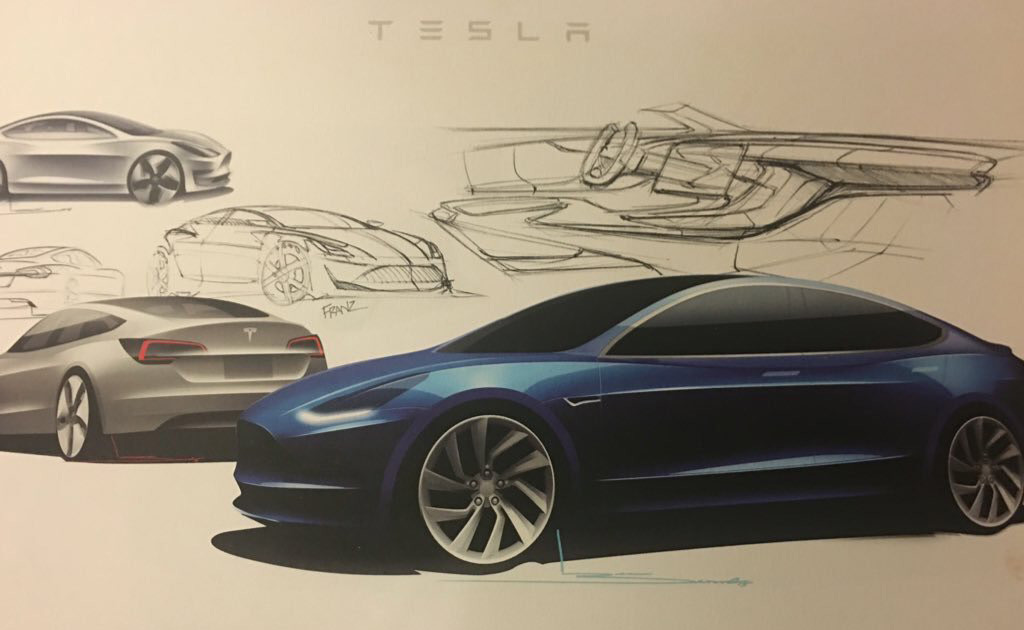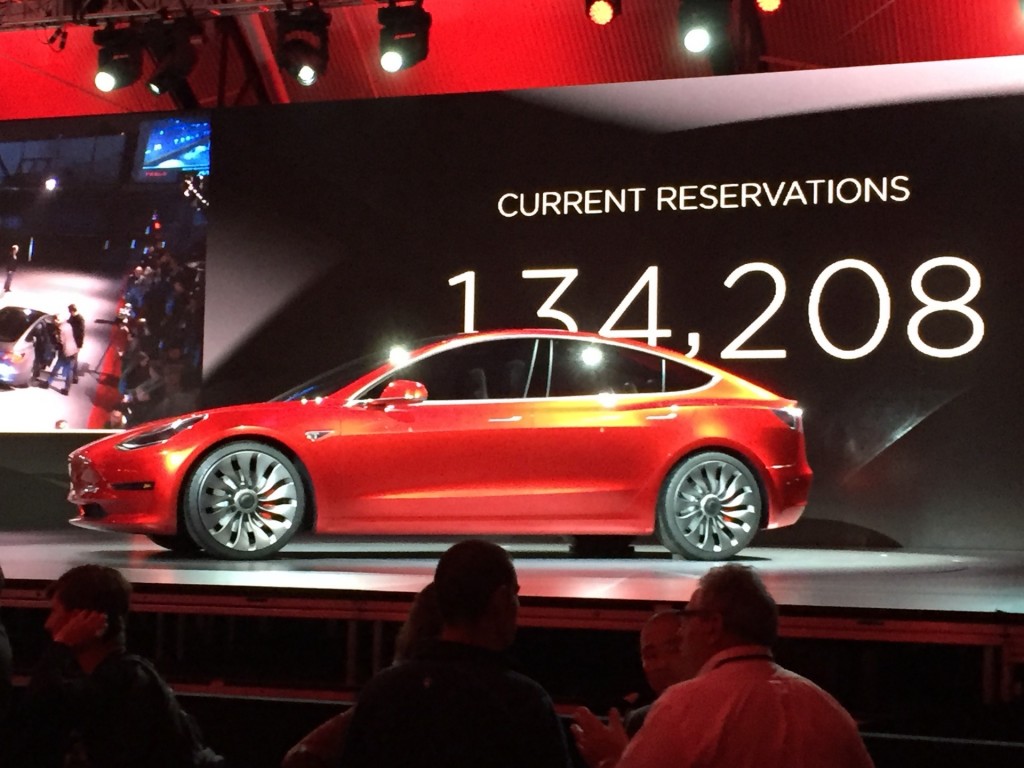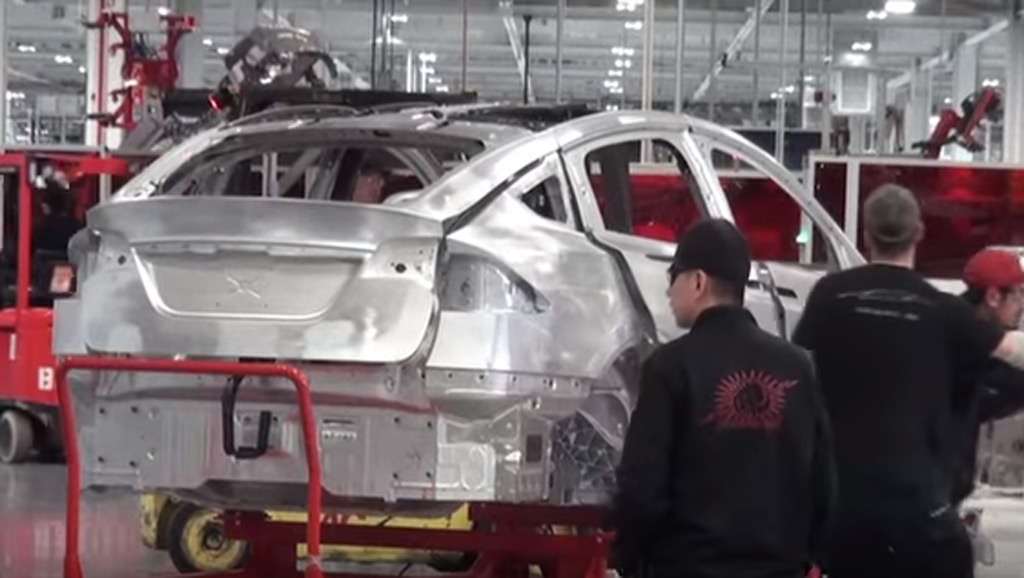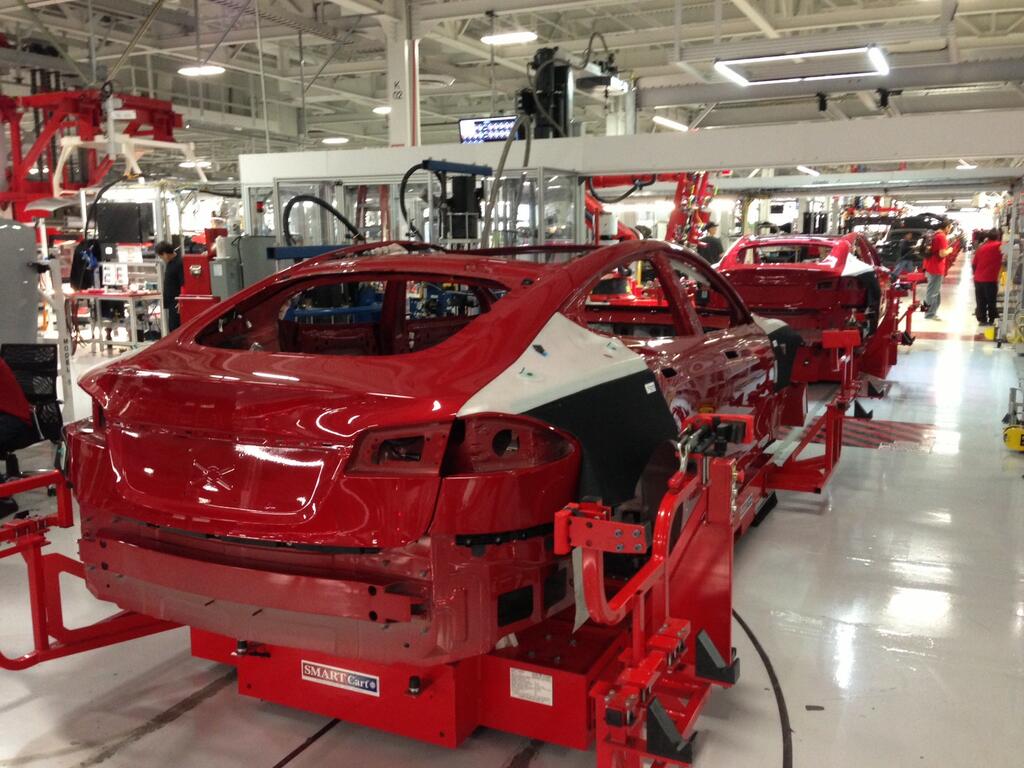
Tesla Model 3
When Tesla Motors CEO Elon Musk said two years ago that the electric-car maker planned to be building half a million cars a year by the end of 2020, it seemed an ambitious stretch goal.
When he said on last week's quarterly earnings call that the company was pulling that goal two years ahead to 2018, you can almost hear the gasps.
That means that Tesla intends to boost its production by a factor of 10 in a mere three years.
DON'T MISS: Tesla projects total 2016 sales of 80,000 to 90,000 electric cars
Tesla delivered 50,557 cars last year, a 60-percent increase over the 31,655 it sold in 2014.
On the call, the company said it expected to deliver 80,000 to 90,000 cars during 2016.
But if history is any guide, that guidance may fall slightly, and Tesla could come in at the low end of the range. Indeed, that 80,000 cars would be a second consecutive 60-percent sales rise.

Tesla Model 3 design prototype - reveal event - March 2016
Such a growth rate would be fantastic for an established automaker in any market, much less globally, but no company has tried to do what Tesla is attempting.
And more than a little skepticism exists about whether Tesla can get to 80,000 this year.
Even longtime Tesla booster Adam Jonas, an analyst at Morgan Stanley, suggested yesterday that the total would be more like 70,000.
CHECK OUT: Tesla 2015 Deliveries Squeak Past 50,000, With 208 Model X During Q4
But even if Tesla manages 80,000 in 2016, two further 60-percent increases will get the company only to 205,000 for 2018.
Adding two more on top of that pushes Tesla to sales of 520,000 in 2020—or right on target with its previous goal.
But now the company, buoyed by almost 400,000 deposits of $1,000 apiece for its upcoming Model 3 car, plans to achieve a far higher growth rate over the next two years.

2016 Tesla Model S
Those sales won't come from today's Model S and Model X, which start at $72,000 and frequently sell for more than $100,000. The global luxury market just isn't that big.
But for the sake of argument, let's assume Model S and Model X sales will continue to grow at 60 percent a year for 2017 and 2018 too.
Even if it sells 205,000 of the two cars in 2018, it would need to add another 300,000 Model 3s that year to get to its half-million goal.
WATCH THIS: Tesla Model 3: video of first ride in prototype $35k electric car
Technically, the goal is to be selling at a rate of 500,000 cars a year by the end of 2018, so let's assume that Model 3 deliveries will be back-loaded to the second half of 2018.
That would still mean that Tesla has to be selling more than 40,000 cars a month by December 2018.
Of those, less than half will be the Model S and Model X—and at that rate, they would be among the very highest-selling vehicles in the large luxury segment.

Tesla Model 3
The Mercedes-Benz S-Class, the best-selling large luxury sedan in the world, sold roughly 100,000 units globally in 2015.
Tesla proposes to equal that with the Model S—and with the Model X as well. But the Model 3 is clearly needed to take the company to that 500,000 goal.
Tesla has said many times that it will launch the Model 3 before the end of next year.
And is already making plans for high-volume Model 3 production, including renting warehouse space 20 miles from its assembly plant in Fremont, California.
But even if it makes that date, the company proposes to go from a production rate of zero in the third quarter of 2017 to something like 25,000 cars a month just 15 months later.

Scene from Tesla Model X production video
And because we don't know the details, specifications, trim levels, or pricing of the Model 3 range, it's unclear whether the base price of $35,000 represents the car we saw introduced last month.
Will that $35,000 Model 3 have Supercharging at no extra cost?
It's almost surely not going to have the full glass roof, as Tesla has learned that at least its Model S and Model X buyers to date like to add options to their electric cars.
But those details are crucial to let buyers with reservations choose when and how to spec out their cars.
And people who buy $35,000 cars are probably less lavish than those who pay two or three times as much.

Red 2013 Tesla Model S cars roll down the production line (Photo: @elonmusk on Twitter)
Then there's the Model 3 rollout schedule, which Tesla has already said will prioritize existing Tesla owners, and then proceed by region (California will likely come first).
North America alone would likely absorb the bulk of those Model 3s in its first year of production.
That means it would have to sell at close to the levels of a volume car like the Toyota Camry within a year after launch (if not those of a Ford F-Series pickup truck).
Just one car with a base price starting at $35,000 or more sells even 100,000 units a year in the U.S. market: the BMW 3-Series, which has been with us for decades.
In the end, the question of whether Tesla can reach its audacious half-million-car rate by the end of 2018 comes down to three questions:
- Can it continue to grow sales of the expensive Model S and Model X to make them the highest-selling global entries in their segments?
- Can it launch the Model 3 before the end of next year?
- Can it then ramp Model 3 production quickly enough during 2018 to deliver 100,000 or more of them during the year?

Frame from
Answering "yes" to all of those questions seems to be the sole way that Tesla could reach its half-million-by-2018 goal.
Stretch goals are good, and certainly the reception to the Tesla Model 3 and those 400,000 depositors have rocked the industry (and probably Tesla itself).
But even if the Model X has taught Tesla some hard, painful lessons about overreaching on product specs, the industry consensus is that the numbers make it all but impossible.
On top of that, history thus far indicates that considerable skepticism is warranted on Tesla's ability to meet its stated deadlines and production volume goals.
_______________________________________













